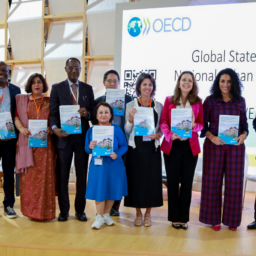7 November 2024
Megacities are rapidly evolving, driven by digital advancements and human-centric planning for a smarter, more sustainable future.
As the 12th World Urban Forum (WUF12) convened, urban leaders, experts, and policymakers from around the globe gathered to address one pivotal question: how can digital technology transform megacities into sustainable urban hubs? With the number of megacities projected to rise from 34 to 48 by 2035, discussions centered on overcoming challenges, leveraging technology, and prioritizing human-centric development.
Unpacking the Challenges
Governance complexities, inefficient resource management, and urban sprawl were recurring themes during the forum. Each city presented unique hurdles:
- Cairo struggles with data harmonization, manual planning, and low public participation, hindering effective urban management.
- Marmara Municipalities Union highlighted issues like congestion, water scarcity, and disaster preparedness in its densely industrialized areas.
- Ho Chi Minh City faces fragmentation and a lack of people-centered development, despite its strides in smart city initiatives.
These shared challenges underscored the urgency of adopting data-driven, inclusive solutions tailored to local contexts.
Harnessing Digital Technology
The forum emphasized the transformative potential of technology in urban planning, with standout presentations from participating cities:
- Seoul Institute: Showcased the integration of artificial intelligence (AI) in predictive modeling and decision-making. By positioning AI as “Augmented Intelligence,” they demonstrated how it complements human creativity to tackle complex challenges like resource allocation and disaster management.
- Marmara Municipalities Union: Presented innovative projects like Marmout for combating marine pollution and Istanbul’s digital twin initiatives, which use big data to enhance policymaking and urban resilience.
- Ho Chi Minh City: Unveiled an interactive digital mapping platform and proposed a framework for smart city development that fosters co-creation with stakeholders to ensure inclusivity and shared ownership.
These case studies illustrated how megacities could effectively leverage technology to address urban complexities.
Collaborating for Inclusive Solutions
A recurring theme across the discussions was the importance of human-centric approaches.
- Equity: Marmara’s focus on equitable access to digital services aligned with Cairo’s emphasis on participatory planning.
- Co-Creation: Ho Chi Minh City proposed collaboration platforms bridging governments, academia, NGOs, and citizens to foster ownership and inclusivity.
- Innovation: Participants suggested crowdsourcing urban data through mobile devices and using open data to bridge gaps in cultural attitudes and data analysis.
Top Takeaways and Key Insights
UN-Habitat’s representatives provided four critical takeaways:
- Megacities are rapidly transforming due to advancements in AI and digital tools.
- Human-centric planning must remain the core of these transformations.
- Tools like UN-Habitat’s MetroHUB are essential for addressing urban complexities.
- Effective governance is key to managing sustainable transformation.
A Roadmap for the Future
The session concluded with a clear message: megacities, particularly in the Global South, are not just population centers but drivers of global transformation. The Seoul Institute emphasized that merging technology with human-focused urban planning is vital for creating resilient, inclusive communities.
As digital innovation reshapes urban landscapes, the lessons from WUF12 provide a blueprint for megacities to address their challenges and unlock their potential for a smarter, more sustainable future.
Explore More:







